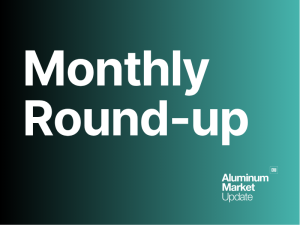
Leadership changes, new plants and looking ahead to 2026
There’s a lot of news to keep track of, so we’re lending a hand with highlights from the past month and what they mean for you.

There’s a lot of news to keep track of, so we’re lending a hand with highlights from the past month and what they mean for you.

Century Aluminum's shipments declined in Q3'25, but stronger lagged prices and tariffs position the company for a near-term earnings recovery.

The Millersburg site will add a production facility to Ball’s Pacific Northwest portfolio, just over a year after the company shuttered its can manufacturing plant in Kent, Washington.

Higher aluminum prices and delivery premiums lifted Novelis' revenue, but shipment softness and elevated conversion costs left North American earnings sharply lower.

The company cited, among other things, scrap purchases, tariff mitigations and the ramp-up of its plant in Switzerland.

The third quarter already showed an HVAC market weakened considerably due to falling consumer demand and destocking at manufacturers and distributors.

The company again upwardly revised its full-year adjusted EBITDA outlook, expecting it to improve 20%-25% year over year.

The results show Hydro holding its operational footing even as profitability becomes harder to predict as margins swing sharply year over year, and even quarter to quarter.

A fire at a Novelis aluminum mill in September shook up domestic supply for automakers

Ford executives said the automaker expects aluminum supplier Novelis to restart its fire-damaged Oswego, NY hot mill by late November or early December.